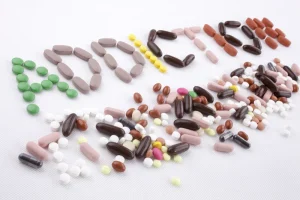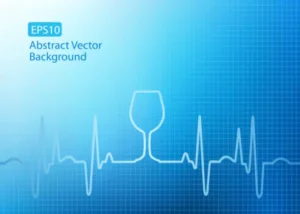
You may have withdrawal symptoms when you stop or lessen the use of opioid medicine. Symptoms may vary depending on several issues, such as the speed of the opioid taper and how long you've used opioid medicines. Tapering over time can help lessen withdrawal symptoms or keep you from having them. Especially follow your healthcare professional's instructions about how and when to take medicines during the taper. Patients who are made to cease MMT should be placed on the same dose reduction schedule as described for patients voluntarily ceasing treatment. If a patient is detained who has been on buprenorphine maintenance treatment in the community, you should endeavour to assist the patient to continue this treatment.
Signs and Symptoms of Methadone Withdrawal
For example, you may experience symptoms sooner than expected or experience them for a longer (or shorter) time. The most serious complication is having an accidental opioid https://ecosoberhouse.com/ overdose if you stop taking an opioid and then return to using it. Sometimes, withdrawal symptoms are so severe that people return to opioid use to make symptoms stop.
Urine drug screening

Medical detox programs are generally about five to seven days in duration, though this can vary according to the individual. Methadone withdrawal can be managed through medical detox, and it should be followed by a complete addiction treatment program to sustain long-term recovery. One of the biggest risks during withdrawal is the possibility of relapse and potentially life-threatening overdose.
- An interaction between two medications does not always mean that you must stop taking one of the medications; however, sometimes it does.
- Once a person is stable at a lower dose, the doctor will attempt to taper you from the drug again.
- After you detox, your brain is operating with depleted stores of neurotransmitters.
- Methadone is a medication used to treat Opioid Use Disorder (OUD).
Tip 63: Medications for Opioid Use Disorder (
- The clinic must be staffed and open to patients seven days per week.
- Your healthcare professional works with you to create an opioid taper schedule that meets your medical needs while keeping risks to your health low.
- Make sure your friends and loved ones know the signs of an overdose and how to use naloxone.
If your doctor prescribes methadone, tell them about any other medicines or supplements you take. Your doctor should also know about any health conditions you have, including a substance use disorder. If you’re older or have certain health conditions, you could be more sensitive to methadone. Methadone overdose can induce severe respiratory depression, potentially resulting in fatalities. Signs of overdose include extreme lethargy, somnolence, stupor, coma, miosis, bradycardia, hypotension, respiratory sedation, and cardiac arrest. The concurrent use of opioids with other drugs that affect serotonergic neurotransmission has resulted in serotonin syndrome.

Dosage for heroin addiction
Opioid withdrawal occurs when you suddenly stop or decrease an opioid your body has become dependent on. While the exact opioid withdrawal timeline will vary for everyone, symptoms usually begin within the first 2 days and can last for several weeks. Nausea, sweating, and diarrhea are just some of the possible symptoms of opioid withdrawal. How soon those symptoms start and how long they last can vary by person, but the general opioid withdrawal timeline can last 1 to 3 weeks. People can become physically dependent and at risk for withdrawal even after short-term use to manage pain. But in general, withdrawal happens more often in people using opioids daily for longer than two weeks, especially more than 90 days.

Methadone is a Schedule II narcotic under the Controlled Substances Act. That means it has a high potential for misuse that could lead to serious psychological or physical dependence. It’s not legal to use methadone unless a doctor prescribes it for you. It depends on how long you’ve been using opioids, how frequently, and at what dose. Using multiple substances also adds complexity to withdrawal, as does your overall health and individual physical characteristics.
Do not try to engage the patient in counselling or other psychological therapy at this stage. A person in withdrawal may be vulnerable and confused; this is not an appropriate time to commence counselling. Methadone works by activating the opioid receptors in the brain and nervous system, it is usually taken orally as a liquid or tablet. By law, methadone withdrawal only a SAMHSA-certified Opioid Treatment Program (OTP) can dispense methadone for the treatment of Opioid Use Disorder. Your OTP can become accredited and certified to treat substance use disorders. If you or someone you love is struggling with a methadone addiction, contact a treatment provider today to discuss available treatment options.
- Due to the risk of methadone misuse and overdose, methadone therapy is only available to people who are enrolled in a government-approved treatment program.
- Seventy two hours for the stuff to get out of my body, and a lifetime of convincing myself the grass isn’t greener on the methadone side.
- All patients should be encouraged to access additional treatments such as psychosocial interventions.
- Ask your healthcare team if you're not sure when you can stop your opioid medicine.
- During this time, you can practice new skills to manage pain and other long-term symptoms too.
- If you or someone you love is struggling with a methadone addiction, contact a treatment provider today to discuss available treatment options.
The program was started as part of Indonesia's comprehensive HIV prevention strategy for prisons. The preferred treatment for cannabis dependence is psycho-social care. Patients who have been using large amounts of cannabis may experience psychiatric disturbances such as psychosis; if necessary, refer patients for psychiatric care. There is some evidence that lithium carbonate may be an effective medication for cannabis withdrawal management.
Medications for Withdrawal Symptoms
Patients should be observed every three to four hours to assess for complications such as worsening anxiety and dissociation, which may require medication. Patients withdrawing from inhalants should be observed every three-four hours to assess for complications such as hallucinations, which may require medication. A minority of patients withdrawing from stimulants may become significantly distressed or agitated, presenting a danger to themselves or others. Symptoms begin within 24 hours of last use of stimulants and last for 3-5 days.
